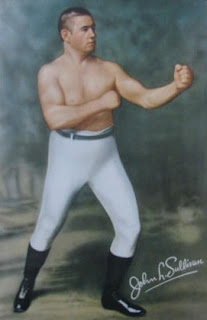 The National Register of Historic Places has listed the 1932 and 1980 Olympic bobsled track, located on Mt. Van Hoevenberg in Lake Placid, N.Y., on its national registry for historic places.
The National Register of Historic Places has listed the 1932 and 1980 Olympic bobsled track, located on Mt. Van Hoevenberg in Lake Placid, N.Y., on its national registry for historic places.
Clearing for the original one and a half, 26-curve course began in August 1930 and the track, specifically built for the 1932 winter games, was open to the public just 148 days later, Christmas Day 1930. More than 27,000 cubic yards of earth and stone were used for the straight-aways and curves, while 8,000 feet of pipe, laid four feet underground, was buried to carry the water used to spray the ice from a pond near the base to the top. A gasoline engine and pump forced the water to the top of the run, where a large storage tank guaranteed a continuous supply of water.
The United States’ bobsled team was right at home on the first track ever built in North America and the first-ever one and a half mile course used in Olympic competition. The team won two gold medals, one silver and one bronze. Billy Fiske, who four years earlier at the age of 16 became the youngest-ever Olympic gold medalist, claimed the four-man crown, while fellow American Henry Homburger of Saranac Lake, N.Y., claimed silver. Two brothers from Lake Placid, Curtis and Hubert Stevens, won the two-man race, while their teammates, John Heaton and Robert Minton, took bronze. That event also marked the first-ever two-man race in Olympic history and the first time athletes pushed their sleds at the start.
In 1934 the International Bobsled Federation (FIBT) established a one-mile standard for all tracks. To accommodate the change, the top one-half mile was shut down above the Whiteface curve and the number of curves was reduced from 26 to 16, making the upper portion of the run unusable.
Fifteen years later, the 1,537-meter long course became the first track outside of Europe to host a world championship competition and it was then that Belgian bobsledder Max Houben was killed during a practice run when sliding through the “Shady” curve, prior to the race. Today, the four-man world championship trophy is named in Houben’s honor.
As sled technology improved and speeds grew, changes were made to the course and it took 12 more years before world championship racing returned, in 1961. Throughout the decade of the 1960’s tracks throughout the world continued to try to keep up with sled technology as the request for speed knew no limits. From time to time crashes and tragedy would strike those tracks … even Lake Placid. In 1966, Canadian pilot Sergio Zardini (1964 Olympic silver medalist for Italy) was killed when his four-man sled crashed on turns 13 and 14, better known as the “Zig-Zag Curves.”
With the improvements made and with the blessing of the FIBT, the course hosted Worlds three more times, 1969, 1973 and 1978. Other sports including luge and skeleton also began using the course before it was demolished and re-built in 1979, in time for the 1980 Olympic bobsled competition.
The re-construction included installing refrigeration piping and the building of a refrigeration plant at the base of the run, operated by electricity, with a stand-by generator for emergencies. Following the 1980 games, the track hosted the 1983 world championships before the current combined bobsled/luge/skeleton track was built in 2000.
Today, the track no longer hosts international competitions, but it remains in use. Summer bobsled rides are held on the course, where visitors can enjoy half-mile rides, while reaching speeds in excess of 50-miles-per-hour, while professional drivers steer their sleds through “Shady” and “Zig-Zag.”
Kathleen LaFrank of New York State Parks Recreation & Historic Preservation helped to direct the research. She gathered much of the data and pictures required for the nomination of New York’s historical sites and the additional honor of being named to the National Registry as well.
“The bobsled run is internationally recognized for its association with the 1932 games and the rise of the sport in the United States,” stated Olympic Sports Complex general manager Tony Carlino. “Athletes and visitors from all over the world know of this track, and there are very few worldwide that carry this kind of history. The creation of this track helped to make Lake Placid famous as a winter sports capital.”
Photo: Construction workers lay rocks as they build the Mt. Van Hoevenberg bobsled track, in 1930 in anticipation of the 1932 Olympic Winter Games in Lake Placid, N.Y. (Photo Courtesy of ORDA)
 On Tuesday, March 2, 2010 (from 6:30-8:30pm) the New York City Historic Districts Council will offer a cultural resource survey presentation on Addisleigh Park, a little-known but culturally significant neighborhood in Southeast Queens. The event will be held at the Neighborhood Preservation Center, 232 East 11th Street, Manhattan.
On Tuesday, March 2, 2010 (from 6:30-8:30pm) the New York City Historic Districts Council will offer a cultural resource survey presentation on Addisleigh Park, a little-known but culturally significant neighborhood in Southeast Queens. The event will be held at the Neighborhood Preservation Center, 232 East 11th Street, Manhattan.





